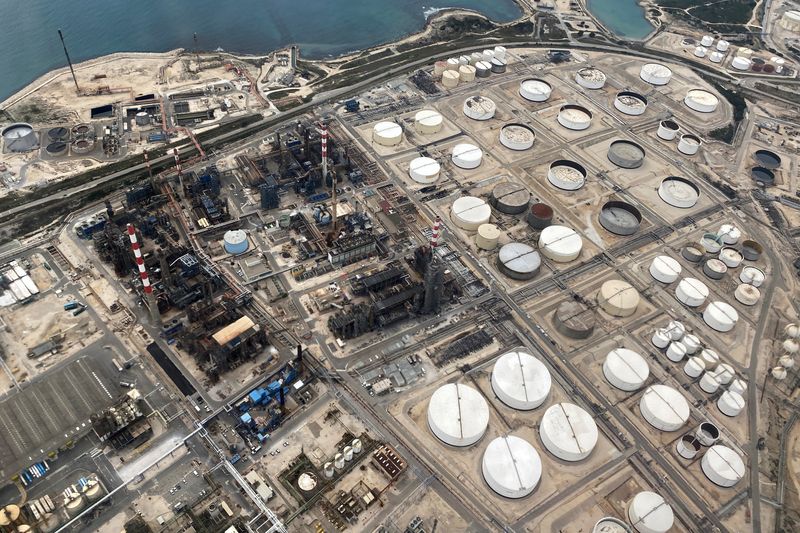
By Robert Harvey
LONDON (Reuters) -Oil prices rose 1% on Monday on renewed concerns that an escalating Gaza conflict could disrupt regional oil supplies, extending gains from Friday when the prospect of U.S. interest rate cuts lifted the global economic and fuel demand outlook.
Brent crude futures climbed 79 cents, or 1%, to $79.81 a barrel by 0910 GMT, while U.S. crude futures were at $75.63 a barrel, up 80 cents, or 1.07%.
In one of the biggest clashes in more than 10 months of border warfare, Hezbollah fired hundreds of rockets and drones into Israel on Sunday, as Israel’s military said it struck Lebanon with around 100 jets to thwart a larger attack.
The clash raises fears the war in Gaza conflict risks becoming a regional conflict that would draw in Hezbollah’s backer Iran and Israel’s main ally the United States, though so far no oil output has been affected.
“Oil prices continue to rise due to the weekend’s attacks between Israel and Hezbollah. However, the situation seems to have calmed down again, which is why gains remained limited,” Commerzbank (ETR:CBKG) analyst Carsten Fritsch said.
Both oil benchmarks gained more than 2% on Friday after U.S. Federal Reserve Chair Jerome Powell endorsed the start of interest rate cuts.
“The prospect of easing monetary policy boosted sentiment across the commodity complex,” ANZ analysts said in a note.
Investors remain cautious over the actions of the Organization of Petroleum Exporting Countries (OPEC) and its allies, or OPEC+, which has plans to raise output later this year, said Priyanka Sachdeva, senior market analyst at Phillip Nova.
“The cartel had recently trimmed its outlook for global oil demand, citing concerns over weak demand in top oil importer China,” Sachdeva said.

“Current robust U.S. demand and refilling of SPR reserve look as the only support for oil prices against the risk of excess OPEC supply,” she said, referring to the U.S. Strategic Petroleum Reserve (SPR).
If OPEC+ were to postpone the planned October production increase, oil prices could receive short-term support, Saxo Bank analyst Ole Hansen added.
This post is originally published on INVESTING.


